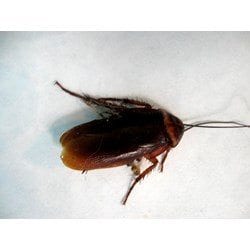Is it a Bee? Is it a Wasp?
Stinging insects can be found just about everywhere. Portland exterminating services are all too familiar with the types and habits of these pests. Of course, they do serve a purpose in nature, to be sure. Sometimes, they can grow in number in an area which may create danger, such as a garden. They also can get into a home and nest there.
Before taking action against any stinging insect, it is best to know what you are dealing with. Here are some of the common stinging insects in and around Portland Oregon. Some may be similar, but there are some characteristics which can help differentiate them.
Photo credit: ViaMoi / Foter.com / CC BY-NC-ND

Bees in Portland
There are three types of bees which are quite common not only in Portland, but throughout the United States. They are somewhat similar, but with a little knowledge, you can tell them apart.
- Bumble Bees: Bumble bees are a little larger than honey bees, at about 1/2″. They are fuzzy in appearance, and are black with yellow stripes. Bumble bees nest underground, and are usually only aggressive if someone disturbs their nests. They are probably the most friendly of the bees. They can sting only once, and it is only done as a defense mechanism.
- Honey Bees: Although some may think they look like bumble bees, they are actually more of an orange and brown color. They are also generally slimmer, and do not have a fuzzy appearance. Honey bees only sting once (again, normally only if they feel threatened), but when they do sting, they send out a hormone which alerts other bees. Swarming is a possibility.
- Carpenter Bees: These are less common than the other bees, but they are in the area. They typically like to live in bored out painted wood. They have a shiny appearance, and are black in color. They have a dull yellow color to their upper bodies with a black mark in the center. Males cannot sting, but will act aggressively. Females have a painful sting, however, but seldom do attack. They are 1/2 to 1″ long, and do not live in colonies like other bees. The picture above is of a Carpenter Bee.
Photo credit: e_monk / Foter.com / CC BY-NC-SA

Bald Face Hornet
Bald Face Hornets are somewhat similar to Yellow Jackets, but they have a distinctive white facial marking, and are mostly black otherwise. They like to nest in trees and shrubs and are extremely aggressive. They are able to bite and sting multiple times and will often swarm. They are so aggressive, they will swarm and attack even if someone gets anywhere near their nest. Since they often nest in bushes and trees along city sidewalks, they can be extremely dangerous. If Bald Face Hornets nest in or around a yard, the nest must be destroyed. It is not advised to attempt this yourself. Call in the professionals. They swarm so ferociously that people have died as a result. Portland exterminating services, such as All Pest Control Company, can put an end to these dangerous creatures.
Photo credit: ©ICK9S[M. H. Stephens] / Foter.com / CC BY-NC-SA

Yellow Jackets
There are actually several types of yellow jackets, and while they have a reputation for being aggressive, not all are. Some types are actually very docile and avoid people. Aerial nesters are not as aggressive as the ground nesters. All are capable of stinging and biting, however. Their stings are known to be particularly painful. Yellow Jackets can and do swarm, but this is more common with ground nesting types.
Yellow Jackets have yellow and black stripes, but they appear to have more yellow than black. Most people are keenly aware of what yellow jackets look like, because they are often taught at a young age what to watch out for.
Photo credit: GeorgiaOnMyMind / Foter.com / CC BY-NC-SA

Avoid Stinging Insects
For the most part, bees do not set out to harm humans. On that same note, humans are usually stung at least once in their lifetime by bees or wasps, but it is not an everyday event. Swarming and aggressive types of bees, however, should be taken care of immediately. At times, even the less aggressive bees can be a problem. Getting stung is not something most people can shrug off, and if there are children involved, it can be a traumatic event.
If you live in the Pacific Northwest, and have a problem with stinging insects in your yard or home, calling Portland exterminating services will help. Trying to rid your yard, particularly of swarming insects can be dangerous, to say the least. In some cases, it has proven to be fatal. Bees waste no time in acting if they feel the hive is being attacked, and sneaking up on bees is nearly impossible.
We hope this information will prove useful to you. Thank you




